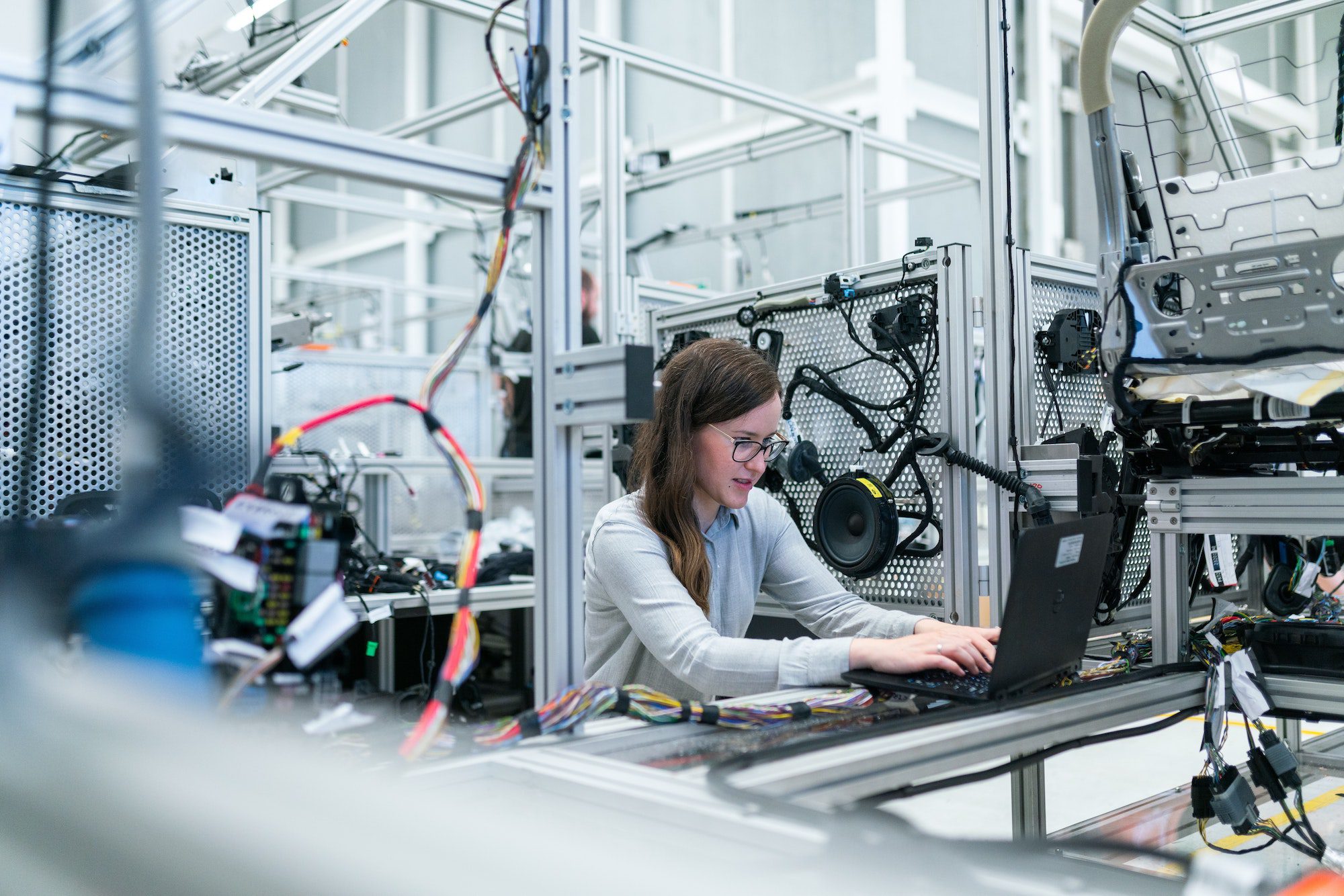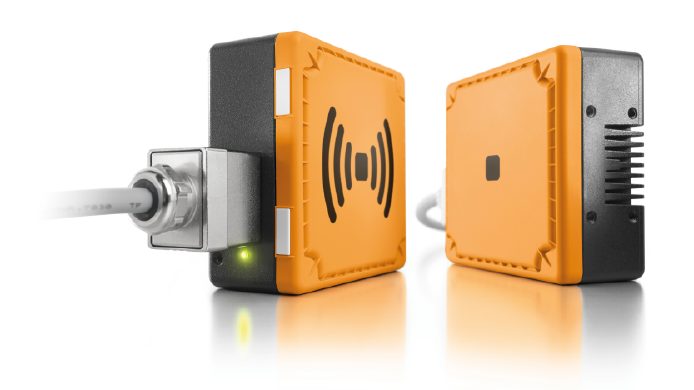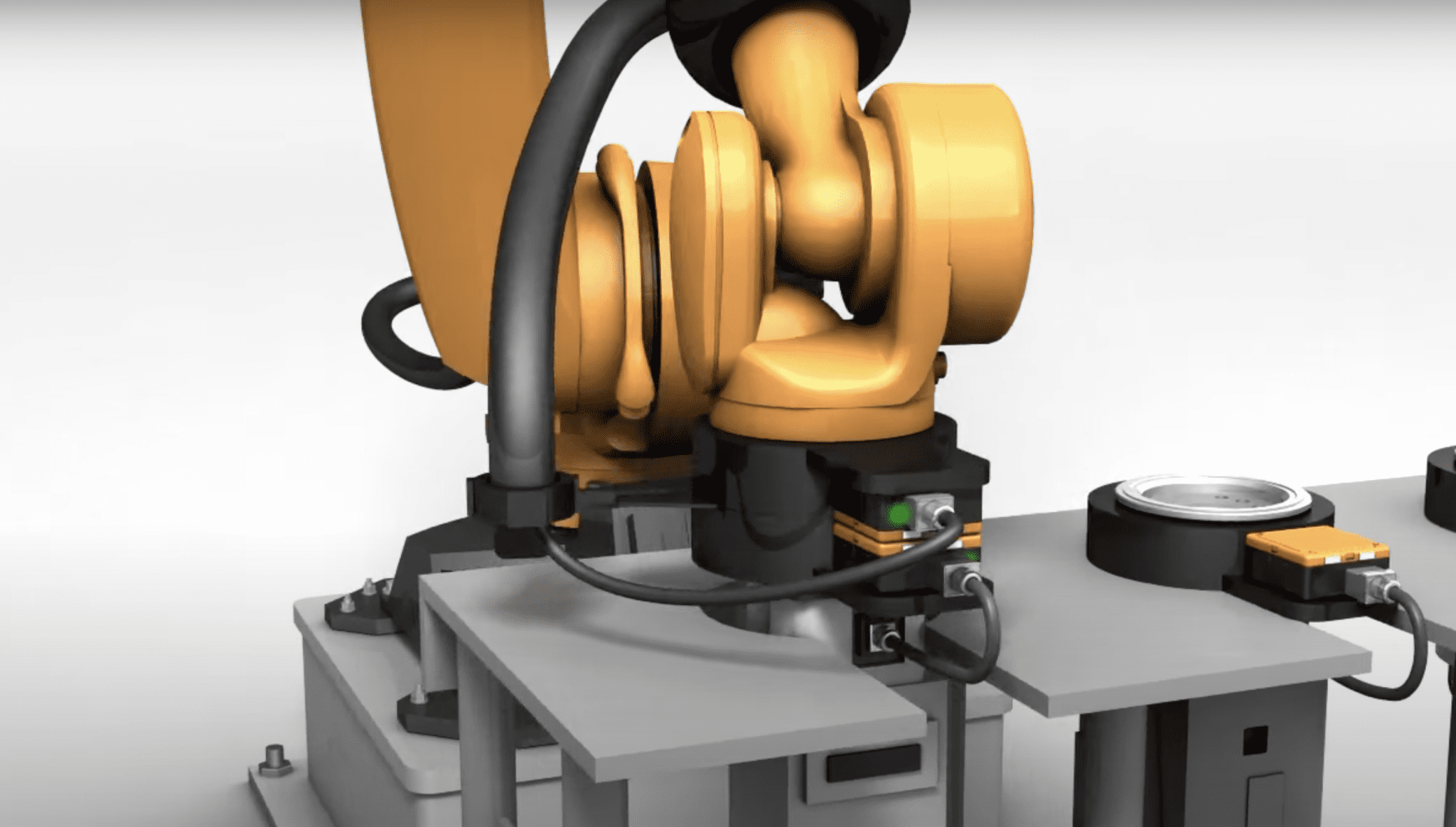Contactless Connector Solutions Drive Maximum Efficiency
In high-use automation applications, repeated mating cycles can result in wear that compromises connectivity and reliability. Contactless connectors offer a new alternative.
By Weidmueller
Mechanical connections present challenges in industrial applications that endure repeated mating cycles. When two mating interfaces interact, inevitable wear and friction cause a range of contact-related failures and maintenance issues. As automation and Industry 4.0 increase the need for powerful interconnects, suppliers are designing new contactless connector technologies that can deliver the power needed without a deterioration of performance.

Contactless connectors are an emerging solution for high-reliability markets that traditionally put connectors through high numbers of mating cycles, including automation-driven industries such as manufacturing. A new solution, Weidmueller’s FreeCon Contactless, is the first connector designed for high-reliability applications that can be used in an automated process to establish a connection that previously had to be plugged in manually.

Developed in close collaboration with leading German car manufacturers, Weidmüeller’s FreeCon connectors serve demanding markets such as manufacturing and automotive.
This contactless solution uses inductive resonance coupling to enable reliable transmission of up to 240 W of power. Contactless connections offer a multitude of performance and handling advantages. They help to increase the level of automation and optimize production processes, making completely new designs and areas of application possible. The process of charging driverless transport systems, for instance, can be automated.
“Contactless connectors are suitable for an extremely wide range of sectors, such as machine construction, robotics, materials handling, and even renewable energy,” said Weidmueller’s René Hülsmann, product engineer. “It can be retrofitted with ease and is thus an appealing solution for existing plants, too.”
Applications contactless connectors serve include:
- Tool changing devices; for example, those used in the production of automobiles.
- Loading equipment for smaller driverless transport systems, mobile manufacturing systems, or trolleys.
- Clean room manufacturing of medical consumables.

Weidmueller’s FreeCon connectors offer extremely low transmission losses, which translate into an efficiency level of up to 93%.
This maintenance-free transmission solution has high flexibility, thanks to unlimited approach options. The secondary side can be approached by the primary side from any direction. The connection is established as soon as both modules are positioned opposite one another. The connection remains stable even in the event of rotational movements.
“As Industry 4.0 becomes increasingly automated, contactless energy transmission will continue to gain in significance,” said Hülsmann. “Why? Because unlike with conventional energy transmission with plug-in connectors, contactless energy transmission is fully automated and causes no mechanical wear whatsoever. This eliminates the need for time-consuming and costly maintenance work on the contacts, in addition to extending the service life and preventing downtimes. Furthermore, contactless energy transmission opens up completely new opportunities for automation and process optimization.”
Intelligence is provided for contact points in the field. Controlled by a programmable logic controller (PLC), the secondary side can be switched on or off using the primary side. The result is a switchable device suitable for integration in a higher-level control program. In addition, its plug-and-play capabilities means the contactless product can be retrofitted for existing systems without any problems.
Power is transmitted by means of inductive resonance coupling across an air gap. This makes it wear-free, reliable, and particularly efficient. An additional value for the user is the remarkable power density, which is twice as high as comparable solutions on the market. It also has significantly higher efficiency with a lower maintenance outlay.
Contactless Industrial Solutions
In the industrial segment, contactless technology opens up countless opportunities for high-performance automation, with advantages such as:
- Wear-free electrical connection switchable within a controlled process.
- High flexibility due to unlimited approach options.
- Complete protection against humidity and dirt.
- Flexible mounting options.
- Fast commissioning with PROFINET push-pull power connection.
“Our recipe for success is based on innovative thermal management, which enabled our developers to achieve an efficiency level of more than 90% and thus effectively reduce heat development,” said Weidmueller product manager Klaus Leuchs. “Under these conditions, we were able to implement the compact design we were aiming for.”
Contactless Case Studies
The advantages for smart factories are illustrated by the example of a German manufacturer of freeze dryers. The company developed an automatic loading and unloading system. The freeze-dryer is loaded by a robot that can be moved horizontally along a toothed belt. The stepper motors of the robot drive are supplied with electrical power via rechargeable batteries. FreeCon Contactless is used to recharge the batteries.
In its park position in front of the freeze dryer, the loading device picks up fresh contactless power, and communication with the control is wireless. The compact design that results makes the loading/unloading system an ideal solution for freeze-dryers in production under cleanroom conditions. This application would not be conceivable without contactless charging.
In another manufacturing example, the inductive charging process for trolleys does not require cables and plug contacts used by one German manufacturer of hardware solutions for the pharmaceutical, cosmetics, and food industry, thanks to contactless connectors.
Low space requirements, high flexibility, and modularity were of great importance for creating a solution for use in cleanrooms and environments with demanding hygiene requirements. The autonomous power supply, combined with Wi-Fi data connectivity, provides the trolley systems with maximum mobility. Power is transmitted via induction through a magnet approach system and the charging process starts automatically on positioning.
The main advantage of the solution is that the compact trolley continuously fulfils the requirements of protection class IP65. In a traditional plug-in connector, a protective cap that would need to be plugged and unplugged frequently is necessary. This is a potential source of contamination in the cleanroom that it is avoided with contactless charging.
Contactless Cleanrooms
Plug-in connections inevitably cause particulate contamination in cleanroom applications, for example. Contactless power transmission provides an alternative. FreeCon Contactless creates clean connections — even through a glass wall, if necessary. This protects products and processes against contamination in typical applications, such as in medical technology, electronic manufacturing, or the food industry. Neither dust nor dirt may enter.
Where manual plug-in connectors reach their limits, contactless transmission technology opens new perspectives in automation.





